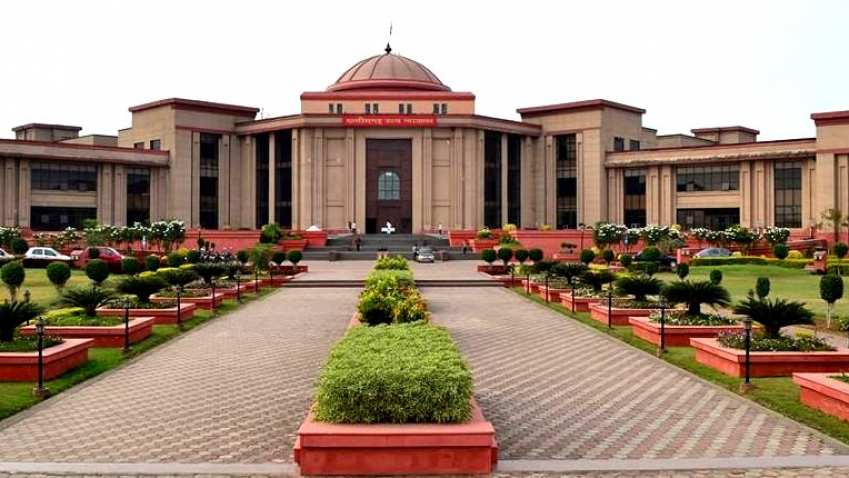Now Reading: 7yrs of Chhattisgarh HC direction for Compulsory Rain Water Harvesting, Still no implementation
-
01
7yrs of Chhattisgarh HC direction for Compulsory Rain Water Harvesting, Still no implementation

7yrs of Chhattisgarh HC direction for Compulsory Rain Water Harvesting, Still no implementation
While dealing with a Public Interest Litigation with regard to facilities of rain water harvesting in the state of Chhattisgarh here on 08.01.2019 Honourable Chhattisgarh High Court said that we already have legislations and rules regarding rain water harvesting in the state of Chhattisgarh but also made an observation that all the authorities saddled with the responsibilities of implementation and enforcement shall ensure that the law is followed.
This Public Interest Litigation was filed in front of Chhattisgarh High Court on 22.11.18, by RTI Activist Raj kumar Mishra in the form of Rajkumar Mishra v. State of Chhattisgarh & Ors. (Writ Petition (PIL) No. 95 of 2018.) with respect to the enforcement of the rules made on 23.07.2011 for rain water harvesting measures.
The filing of Public Interest Litigation even after 7 years of the issuing of the notification and the comment of court over the authorities raises a serious question over the implementing measures in the matters of rain water harvesting in Chhattisgarh.
What is Rain Water Harvesting?
Rainwater harvesting (RWH) is a simple method by which rainfall is collected for future usage. The collected rainwater may be stored, utilized in different ways or directly used for recharge purposes. With depleting groundwater levels and fluctuating climate conditions, Rain Water Harvesting can go a long way to help mitigate these effects. Capturing the rainwater can help recharge local aquifers, reduce urban flooding and most importantly ensure water availability in water-scarce zones.
Further, One of its form i.e. Roof Top Rain Water Harvesting is a system of catching rainwater where it falls. In rooftop harvesting the roof becomes the catchments, and the rainwater is collected from the roof of the house/building. It can either be stored in a tank or diverted to artificial recharge system. This method is less expensive and very effective and if implemented properly helps in augmenting the ground water level of the area.
Why Rain Water Harvesting?
Rain Water Harvesting is very much necessary as even 3/4th of the earth is surrounded by water 97% of this water is in ocean and sea which is not suitable for drinking. Only 3% of the water is drinkable of which only 0.6% is in use today. With the rapid increase in the science and technology, the problem of downfall in the water table has also been seen. As an impact of Global Warming as well as Green House Effect, the whole world is in danger of serious water crisis for which rain water harvesting is the only solution.
As per the Applicant Rain Water which is the purest form of water if harvested provides following benefits-
a) Rainwater Harvesting will reduce the burden from the government water supply systems.
b) It can be used for irrigation purposes.
c) This type of system serves as a major step in getting chemical free and high quality pure form of water.
d) The cost for rain water harvesting set up is very less.
e) The rain water harvesting lessens the soil erosion at the time of flood.
f) Water will remain available to all in sufficient quality after such set up.
g) Rain water harvesting will help in enhancing the current water table.
h) Rain water stored serves as the main source of water.
i) Rain water is free from any kind of infectious disease with Ph value 6.95 which is near to most ideal.
j) In the dense populated areas extra rain flowing unplanned, causes sufferings in many forms.
k) The rainwater soaked inside soil layer neither evaporates nor utilized properly.
The Current issue of Chhattisgarh
On 23.11.2011, the Urban Development Ministry of Government of Chhattisgarh by notification gave the provisions for the compulsory water harvesting over the buildings with plot sizes more than 100 sq m. Further the notification of the Urban Administration and Development Department, Government of Chhattisgarh vide order No- 2345/2131/2017/18 dated- 30 March, 2017 provided the concept of Green Buildings as per Rule 79-C which means “All buildings on various plot sizes above 100 sq m. shall comply with the green norms and conform to the requirements mandatory for sanction.” The provision for sanction in the matter of water conservation and management is as mentioned-
a) Rain Water harvesting as per the Rule 78(4).
b) Low water consumption plumbing fixtures.
c) Waste water Recycle and Reuse.
d) Reduction of Hardship.
The PIL raised the issue that even after such statutory provisions in the state of Chhattisgarh there is no such implementation in reality. The cases such as Adarsh Srivastava v. Union of India, Smt. Rakhi Sharma v. State of MP & Ors. and R.K. Kapoor v. National Capital Territory of Delhi & Ors in the different high courts (Allahabad, Madhya Pradesh and Delhi) gave opinions and also put forward the importance of rain water harvesting.
Thus, in a nutshell it can be said that rain water harvesting is the only present solution today to deal with the current water crisis and for this each and every state should take necessary and immediate steps for its proper implementation. Such PIL by Raj Kumar Mishra in true sense compels every individual to think about such measures and also promotes every state to make such laws for rain water harvesting so that not only such setups could be made but also in true sense concrete implementation can be done.










